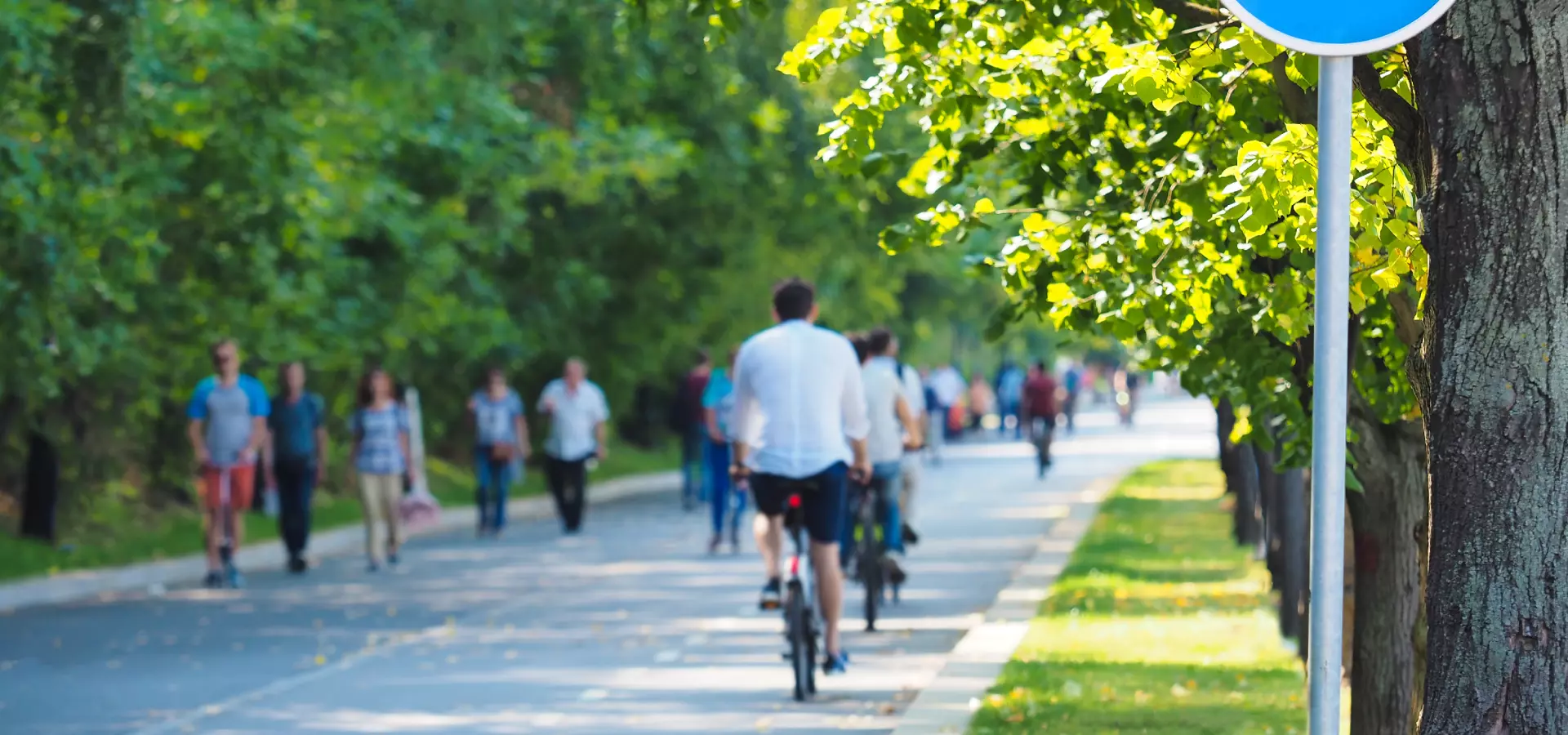
Walking and cycling - they’re worth the risk!
Car ownership was not just desirable: it was essential, on a par with food, clothing and shelter. It was an idea that held sway, axiomatic, unquestioned. The media and spokespersons for ‘the Roads Lobby’ continually reinforced it and disparaged or ignored alternative concepts.
Distribution of settlements, locations of workplaces, retail and leisure centres were planned with a presumption of almost universal car ownership. The railway network was depleted. British Rail suffered underinvestment and was continually ridiculed. Buses were poor quality, overcrowded and slow. With deregulation, poorer communities suffered service reductions or complete withdrawal. Pedestrians had restricted access, enforced with metal barriers, to publicly funded roads. Cyclists were excluded from some roads, because it was essential for the economy for road traffic to travel quickly, with minimal interruptions, like crossings. One consequence of this increasing car domination is that there is an underlying perception that cycling is dangerous.
That is the context of the inexorable five decade-long rise of car usage in Scotland, at the expense of other modes of travel.
Accidents, 'near misses' and perceived risk
We need a sense of proportion: risk is low. Walking and cycling are not dangerous, as the data show. However, we need to address the causes of accidents, ‘near misses’ and the real fear of danger.
People in the most deprived areas are substantially excluded from car ownership, and have poor access to public transport. They and their children walk more. Their communities contain roads, often busy, which link the more affluent areas to places of employment, leisure and retail. These are the significant determinants of the comparatively high rate of accidents.
As minority groups, the Sustrans pioneers and other environmentalists, were subjects of ridicule or benign tolerance: idealists, they could have their Bristol/Bath and Glasgow/Loch Lomond Cycleways, if it kept them off the roads!
But, when a predominant concept is challenged seriously the reaction is fierce. At best, environmentalists are caricatured disparagingly and treated sceptically by much of the media and powerful political and roads interests. At worst, protesters are harassed legally, economically and physically. Most cyclists and pedestrians have experienced hostility, aggression and restrictions to access. We suffer higher rates of casualties than other road users – “that’ll learn ye!”
Happily, growing numbers of people do not accept car dominance, as “Travel in London” (2009) demonstrates:
There has been a substantial net shift away from private transport and towards public transport in London... The mode share of cycling in London has increased considerably since 2000 ... The increase in cycling’s mode share is equal to 13% of the fall in private motorised traffic mode share.
In Scotland, Sustrans distributes funds for cycling and walking infrastructure to councils via the Community Links fund. At around £35 million for 2015/16, it is small compared with £1.35 billion for the Queensferry Crossing, but has increased in recent years and is guaranteed over three-year periods.
Learning from experience
Sustrans has learned from experience. Although councils had to build the infrastructure, there was no requirement for continuous maintenance. So, more recent agreements have included commitments for maintenance. Can Sustrans enforce this or should we citizens demand it?
On its own, the provision of infrastructure (‘hard measures’) is not enough to encourage more people to walk and cycle. Around half of Sustrans staff are involved in ‘soft measures’: promoting walking and cycling, working with local people in designing paths, streets and junctions, campaigning for reduced speed limits, and ‘I Bike’ officers engaging with schools.
“People make Glasgow”. Let’s create a Glasgow for people – with clean air, uncongested streets, tidy, uncluttered, well-lit footways, local shops, where walking and cycling are people’s first choices.
Download the latest GCPH report 'Pedestrian and cyclist casualty trends in Scotland'.